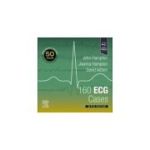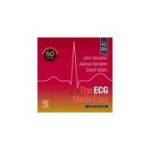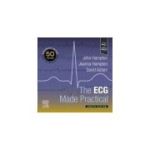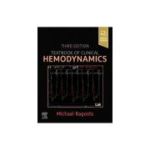Personalized Health Systems for Cardiovascular Disease

DESCRIPTION
Personalized Health Systems for Cardiovascular Disease is intended for researchers, developers, and designers in the field of p-health, with a specific focus on management of cardiovascular diseases. Biomedical engineers will benefit from coverage of sensors, data transmission, signal processing, data analysis, home and mobile applications, standards, and all other subject matters developed in this book in order to provide an integrated view of the different and multidisciplinary problems related to p-health systems. However, many chapters will also be interesting to physicians and other professionals who operate in the health domain. Students, MS and PhD level, mainly in technical universities, but also in medical schools, will find in this book a complete view of the manifold aspects of p-health, including technical problems related to sensors and software, to automatic evaluation and correct interpretation of the data, and also some legal and regulatory aspects. This book mainly focuses on the development of technology used by people and patients in the management of their own health. New wearable and implantable devices allow a continuous monitoring of chronic patients, with a direct involvement of clinical centers and physicians. Also, healthy people are more and more interested in keeping their own wellness under control, by adopting healthy lifestyles and identifying any early sign of risk. This is leading to personalized solutions via systems which are tailored to a specific patient/person and her/ his needs. However, many problems are still open when it comes to p-health systems. Which sensors and parameters should be used? Which software and analysis? When and how? How do you design an effective management plan for chronic pathologies such as cardiovascular diseases? What is useful feedback for the patient or for the clinician? And finally, what are the limits of this approach? What is the view of physicians? The purpose of this book is to provide, from a technical point of view, a complete description of most of the elements which are part of such systems, including the sensors and the hardware, the signal processing and data management procedures, the classification and stratification models, the standards and the regulations, focusing on the state of the art and identifying the new directions for innovative solutions. In this book, readers will find the fundamental elements that must be taken into account when developing devices and systems in the field of p-health.
- Provides an integrated approach to design and development of p-health systems which involves sensors, analysis software, user interfaces, data modeling, and interpretation.
- Covers standards and regulations on data privacy and security, plus safe design of devices.
- Supported by case studies discussing development of actual solutions in the biomedical engineering field.
Table of Contents
- Cover image
- Title page
- Table of Contents
- Copyright
- Dedication
- List of contributors
- About the editors
- Preface
- Introduction
- Chapter 1. Telemonitoring applications in cardiology
- Abstract
- 1. 1 Background
- 1. 2 Telemonitoring applications in cardiology
- 1. 3 Challenges and future perspectives
- References
- Chapter 2. Data and signals for the assessment of the cardiovascular system
- Abstract
- 2. 1 Introduction
- 2. 2 The electrocardiogram
- 2. 3 RR series
- 2. 4 Arterial blood pressure
- 2. 5 Photoplethysmography
- 2. 6 The phonocardiogram
- 2. 7 Benefits of massive screening of cardiovascular signals
- References
- Chapter 3. Systems, sensors, and devices in personal healthcare applications
- Abstract
- 3. 1 Patient monitoring in personal healthcare settings
- 3. 2 Application-driven sensor research and device development
- 3. 3 Personal healthcare sensing technologies
- 3. 4 Implementation examples
- 3. 5 Conclusions
- References
- Chapter 4. Signal processing for cardiovascular applications in p-health
- Abstract
- 4. 1 Introduction
- 4. 2 Preprocessing
- 4. 3 Feature extraction
- 4. 4 Heart rate variability, a time series rich in information
- 4. 5 Conclusions
- References
- Chapter 5. Models for risk assessment and stratification
- Abstract
- 5. 1 Introduction
- 5. 2 Risk assessment and stratification
- 5. 3 Risk progression and prognosis
- 5. 4 Assessment of patients’ similarity
- 5. 5 Risk assessment
- 5. 6 Risk progression
- 5. 7 Conclusions
- References
- Chapter 6. Connected health technologies for knowledge extraction and knowledge-based medicine in cardiac care
- Abstract
- 6. 1 Introduction
- 6. 2 Enabling technologies and building blocks: The connected health technologies in cardiac care
- 6. 3 Knowledge-based cardiovascular disease medicine in the context of connected health technologies
- 6. 4 Discussion
- References
- Chapter 7. Increasing and standardizing quality of care using computerized guidelines for clinical decision support
- Abstract
- 7. 1 Introduction
- 7. 2 Diagnosis and treatment of preeclampsia and heart failure
- 7. 3 What are clinical guidelines?
- 7. 4 Computerized guidelines for decision support in heart failure
- 7. 5 Discussion: Benefits and contributions of using a guideline-based clinical decision support systems
- 7. 6 Conclusions
- Acknowledgments
- References
- Chapter 8. Digital coaching for personalized healthcare of cardiovascular diseases
- Abstract
- 8. 1 Introduction
- 8. 2 Needs, preferences, and attitudes
- 8. 3 Study cases of coaching systems for cardiovascular diseases in the literature
- 8. 4 Matching users’ needs and preferences with features implemented in study cases
- 8. 5 Conclusions
- Acknowledgment
- References
- Chapter 9. Methods for app development in p-health
- Abstract
- 9. 1 Introduction
- 9. 2 Apps for p-health
- 9. 3 Directive for p-health app development
- 9. 4 Interoperability for apps in p-health
- 9. 5 Regulatory framework for health apps
- 9. 6 Conclusions
- References
- Chapter 10. Devices for p-health: Which regulations in Europe?
- Abstract
- 10. 1 Introduction
- 10. 2 Principles of the regulations
- 10. 3 Conclusions
- Chapter 11. Remote management of heart failure patients: A p-health example
- Abstract
- 11. 1 Introduction
- 11. 2 Heart failure and management strategies
- 11. 3 Success and potential of home monitoring and self-care in heart failure
- 11. 4 Steps toward personalized solutions
- 11. 5 Conclusions
- References
- Index
Book categories
-Special order
-Soon to come
-Publishers
-Promo
-Callisto Publications
-New books
-- 992,25 leiMRP: 1102,50 lei
- 321,30 leiMRP: 357,00 lei
- 168,00 lei
Promotions
-- 992,25 leiMRP: 1102,50 lei
- 321,30 leiMRP: 357,00 lei
- 434,70 leiMRP: 483,00 lei












OUR VISITORS OPINIONS